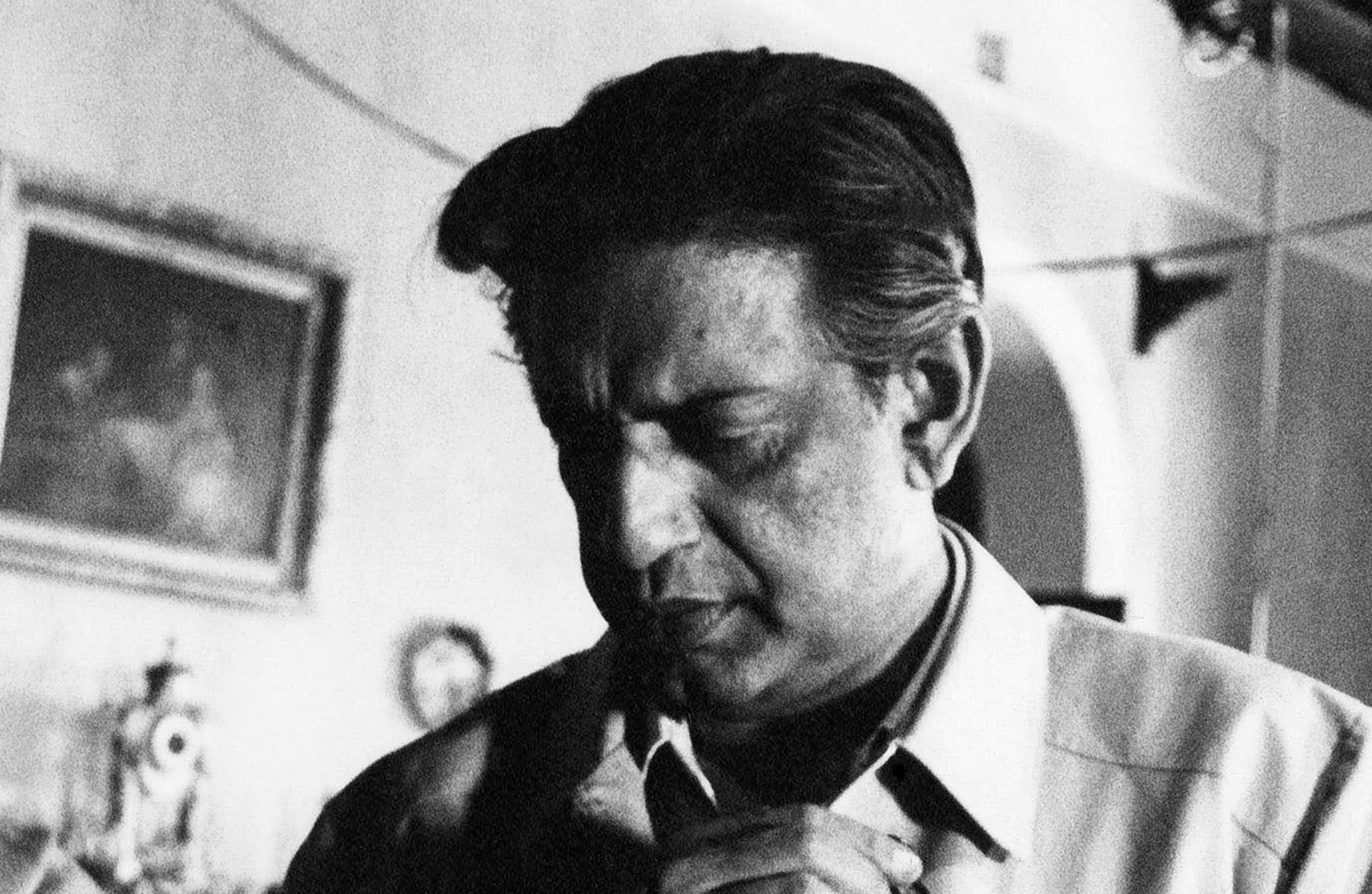Satyajit Ray

About
Biography
Filmography
Family & Companions
Notes
"Not to have seen the films of Satyajit Ray would mean existing in the world without seeing the sun or the moon." --Akira Kurosawa quoted in The New York Times, February 21, 1992.
"Ray's productions were virtually one-man shows. He wrote the screenplay, cast the parts, designed the costumes, scored the music, directed, mixed and edited the final package. Originally a graphic artist, he also sketched the advertisements." --From New York Post obituary, April 24, 1992.
Biography
Satyajit Ray, India's only internationally renowned filmmaker, was born into a family prominent in Bengali arts and letters for fifteen generations. In 1940, after receiving his degree in science and economics, he attended Rabindranath Tagore's "world university" in rural Santiniketan. Tagore, the dominant figure in India's cultural renaissance, had a strong influence on Ray, whose humanist films reaffirm his Bengali heritage within a modern context.
In 1942, Ray returned to Calcutta, where he spent the next ten years as layout artist and art director for a British-run advertising agency. In his spare time he wrote film scenarios, among them an adaptation of Tagore's novel, "Ghare Baire," which producers rejected when Ray refused to make changes. With India's independence in 1947, Ray co-founded Calcutta's first film society with Chidananda Das Gupta and wrote articles calling for a new cinema.
His reputation as a graphic artist brought offers to illustrate books, including an abridged edition of Bibhuti Bhusan Banerjee's classic novel, "Pather Panchali," in 1946. After an influential encounter with Jean Renoir in Calcutta in 1949 and a business trip to London in 1950, where he saw Vittorio De Sica's "The Bicycle Thief "(1948), Ray set out to script and direct "Pather Panchali." The film, shot on location on weekends, failed to attract backers and could not be completed until a request from the Museum of Modern Art in New York to include it in their Indian art exhibit led the West Bengal government--in an unprecedented move--to provide funds.
"Pather Panchali" (1956) won several international awards and established Ray as a world-class director, as well as being a box-office hit at home. Artistic and financial success gave Ray total control over his subsequent films; in his numerous functions--writer, director, casting director, composer (since 1961) and cinematographer (since 1963)--he was able to continue Tagore's example in theater of welding the arts into a unified entity. Two sequels also based on the novel ("Aparajito" 1957, "The World of Apu" 1959) completed the acclaimed "Apu" trilogy, whose slow-paced realism broke with the song-and-dance melodramas of Indian cinema. Using long takes and reaction shots, slow camera movements, and--in "Kanchanjangha" (1962)--real-time narrative, Ray allows the meticulous accumulation of details to reveal the inner lives and humanity of diverse Bengali characters.
In 1961, Ray revived "Sandesh," a children's magazine founded by his grandfather, to which he continued to contribute illustrations, verses and stories throughout his life. Beginning in 1969, he also made four popular children's films which contain an unobtrusive yet distinct political awareness. Earlier in his career, Ray was criticized by Indian critics for failing to deal with Calcutta's immediate social problems. And although he defended his humanist (versus ideological) approach, "Pratidwandi" (1971) signaled a shift toward political themes. In the 1970s, Ray's films acquired a bitter tone and deviated from his usual classical style, with the abrupt use of montage, jump cuts and flashbacks.
Ray's "Ghaire Baire/The Home and the World" (1984) was a return to his first screen adaptation. While shooting, he suffered two heart attacks and his son, Sandip, completed the project from his father's detailed instructions. Ray continued to write prolifically, completing 13 half-hour TV screenplays to be directed by Sandip, and returned to directing in 1989 with an adaptation of Ibsen's "Enemy of the People." In 1992, the year of his death, Ray was awarded an honorary Oscar for "his rare mastery of the art of motion pictures, and for his profound humanitarian outlook, which has had an indelible influence on filmmakers and audiences throughout the world."
Filmography
Director (Feature Film)
Cast (Feature Film)
Writer (Feature Film)
Producer (Feature Film)
Music (Feature Film)
Film Production - Main (Feature Film)
Misc. Crew (Feature Film)
Cast (Special)
Director (Short)
Cast (Short)
Writer (Short)
Life Events
1942
Worked for D.J. Keymer & Co., British-run advertising agency; began as layout artist, worked his way up to senior art director
1947
Founded Calcutta's first film society with Chidananda Das Gupta
1956
Wrote, produced and directed first feature, "Pather Panchali"
1992
Received lifetime achievement honorary Oscar on March 16 at a Calcutta hospital where he had been admitted with chest pains and respiratory problems a few weeks earlier
Videos
Movie Clip





Family
Companions

Bibliography
Notes
"Not to have seen the films of Satyajit Ray would mean existing in the world without seeing the sun or the moon." --Akira Kurosawa quoted in The New York Times, February 21, 1992.
"Ray's productions were virtually one-man shows. He wrote the screenplay, cast the parts, designed the costumes, scored the music, directed, mixed and edited the final package. Originally a graphic artist, he also sketched the advertisements." --From New York Post obituary, April 24, 1992.
Given the Gem of India Award (1992), the highest civilian honor in India.











